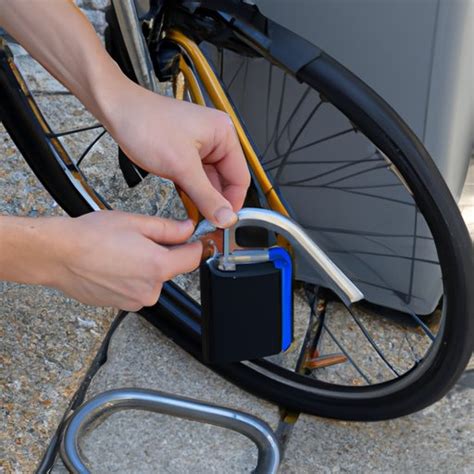Common Bike Lock Failures and How to Avoid Them
Losing your bike is devastating. It's more than just losing a possession; it's losing your freedom, your mode of transportation, and potentially a significant investment. A good bike lock is your first line of defense, but even the best locks can fail if not used correctly. This article explores common bike lock failures and provides practical tips to help you protect your bicycle.
What are the Most Common Ways Bike Locks Fail?
Bike thieves are resourceful, and they'll exploit any weakness in your security. Here are the most common ways bike locks fail:
- Lock Picking: Experienced thieves can pick many locks, especially cheaper or older models. This is often done silently and quickly.
- Bolt Cutters: A determined thief with bolt cutters can easily sever many chain locks and even some U-locks, especially thinner ones.
- Leveraging/Pulling: Thieves might try to leverage the lock against a fixed object to bend or break it. This is especially effective against weaker U-locks or D-locks.
- Hammering/Smashing: Some thieves will simply try to damage the lock mechanism using a hammer or other blunt force.
- Spraying with Freeze Spray: This can freeze the lock mechanism, making it difficult to operate and potentially causing it to break.
How to Choose a Bike Lock that Resists These Failures?
Choosing the right lock is crucial. Don't skimp on security!
1. U-Locks: These are generally considered the strongest type of bike lock, offering excellent resistance to bolt cutters and hammering. Look for a U-lock made of hardened steel with a thick shackle (the curved bar). The larger the shackle diameter, the better.
2. Chain Locks: Chain locks offer flexibility, allowing you to lock your bike to wider objects. However, they're more vulnerable to bolt cutters than U-locks. Choose a chain made of hardened steel links with a strong lock mechanism. Thicker chains are more resistant to cutting.
3. Cable Locks: These are the weakest type of bike lock and are easily cut. They're best used as a supplementary lock, not your primary security measure.
Where to Lock Your Bike for Maximum Security?
The location of your lock is just as important as the lock itself.
- Lock to Immovable Objects: Always lock your bike to a sturdy, immovable object like a bike rack, sturdy pole, or tree. Avoid flimsy railings or anything that can easily be moved or damaged.
- Lock Multiple Points: If possible, lock both your frame and your wheels to the object.
- Secure the Wheels: Use a separate lock to secure your wheels if your main lock doesn't encompass them.
What are the Best Practices for Using a Bike Lock?
1. Lock Through the Frame: Always lock your bike through the frame, ideally the down tube or seat tube.
2. Choose the Right Lock Size: Make sure your lock is appropriately sized for the object you’re locking it to.
3. Avoid Ground Level Locking: Thieves can easily get leverage or use tools to attack a lock if it's close to the ground.
4. Regular Maintenance: Check your lock regularly for any signs of wear and tear. If you notice any damage, replace it.
5. Don't Overlock: Don’t try to force the lock if it’s difficult to operate. This can damage the lock mechanism.
How Can I Make My Bike Less Appealing to Thieves?
Besides a good lock, consider these additional measures:
- Register Your Bike: Registering your bike with a national database can aid in recovery if it's stolen.
- Mark Your Bike: Engrave your bike frame with your identification number for easier identification.
- Use a GPS Tracker: A GPS tracker can assist in locating your bike if stolen.
- Take Pictures: Take detailed photos of your bike, including serial number.
What Types of Locks Should I Avoid?
- Cheap Cable Locks: As mentioned before, these are easily cut and offer minimal security.
- Lightweight U-locks: Opt for thicker, heavier U-locks to provide greater resistance to attacks.
- Locks with Easily Broken Shackles: Inspect the shackle carefully for any apparent weaknesses.
By understanding common bike lock failures and implementing these preventive measures, you significantly reduce the risk of theft and increase the chances of keeping your prized possession safe. Remember, your bike’s security is a multi-faceted approach that includes smart locking techniques, a robust lock, and proactive measures.

